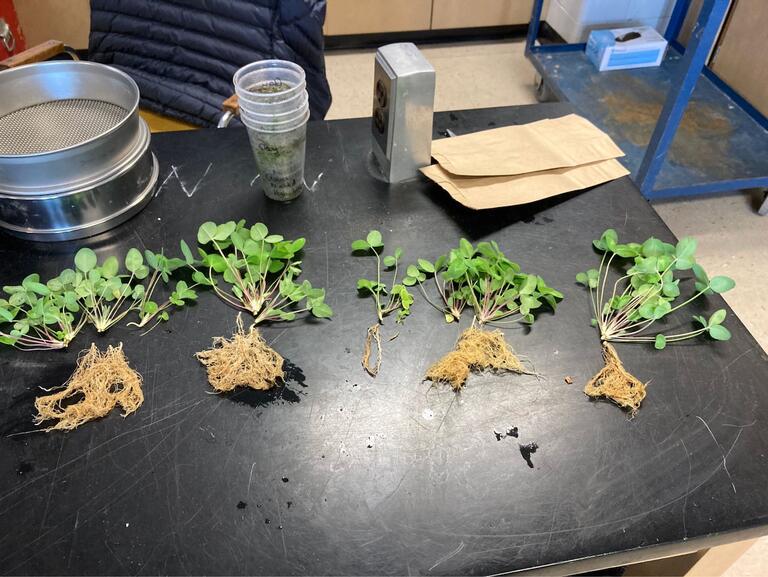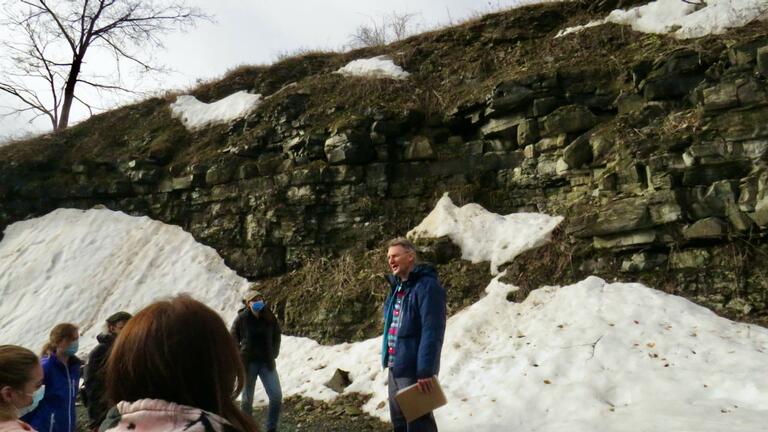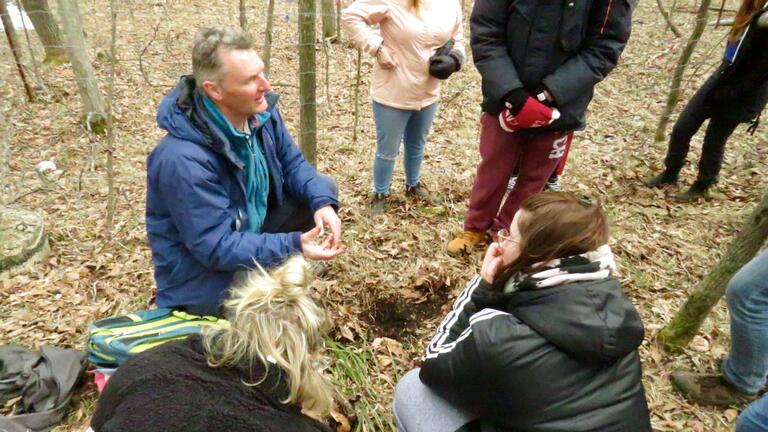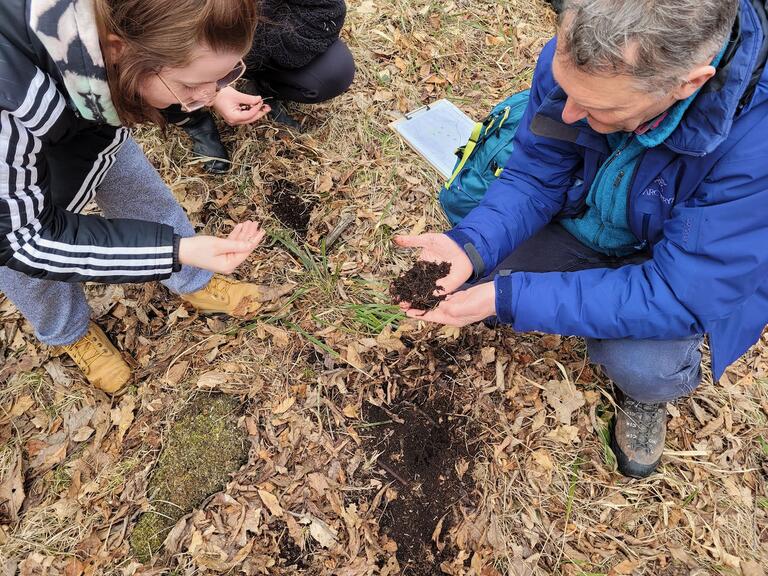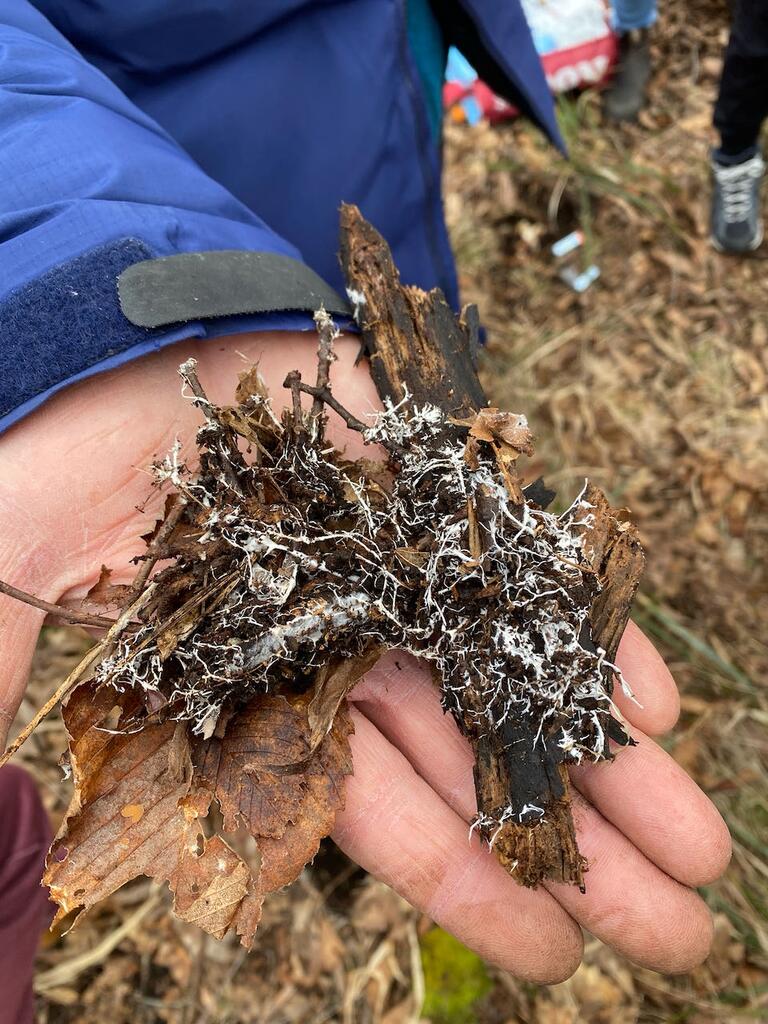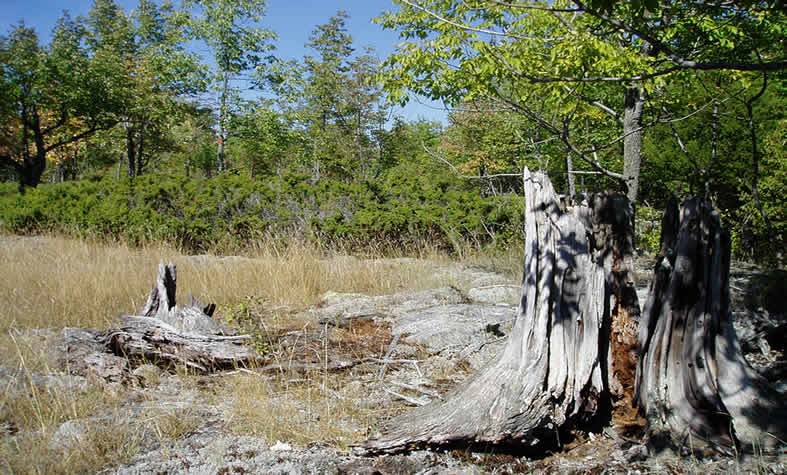
Welcome to the Biol 416 Web Page for Winter 2022
The ecosystem approach to ecology treats organisms and the physical aspects of their environment as components of a single integrated system. Terrestrial ecosystem functioning is governed by interactions amongst animals, plants, and soil organisms, as well as exchanges of energy and resources with the atmosphere, soils, rocks, and aquatic environments. This advanced undergraduate level ecology course is focused on plant-soil interactions as being a fundamental determinant of the structure and functioning of terrestrial ecosystems around the world. As a group, we will attempt to synthesize recent advances arising from the ecosystem approach with established ecological theory to describe and explain ecosystem-level patterns and processes in the terrestrial environment.
The course content for the Winter 2022 iteration will be centered on identifying, critiquing, and applying terrestrial ecosystem ecological concepts to address the following thematic question: What insights can an in-depth understanding of terrestrial ecosystem-level ecology provide to advance the scientific rationales, implementation, and improvement of United Nations Sustainable Development Goal #15 (Life on Land)?
Learning outcomes
By the end of this course, the student should be able to:
- Explain and evaluate the major concepts underlying terrestrial ecosystem ecology that distinguish it from lower hierarchical levels in biology such as community and population ecology
- Describe and contrast the major processes and features that distinguish local terrestrial ecosystems, especially in the context of how soil-plant relationships and land-use practices have influenced the pre- and post-colonial landscape around Kingston
- Discuss and critique United Nations Sustainability Development Goal #15 (Life on Land) and explain the scientific rationales underlying each of its nine specific targets.
- Formulate clear, original, challenging, and concise thematic questions from study reading material that are likely to lead to focussed and intellectually probing seminar group discussions, student-led seminar topics, and short media presentations
- Present a stimulating, informative and creative seminar on the scientific rationale, current progress, and suggested improvements for one of the nine specific targets within United Nations Sustainability Development Goal #15 (Life on Land)
- Develop, conduct, and analyse an experimental research study on some aspect of plant-soil relationships that affects local old field meadow grassland ecosystem functioning
- Create an original, cohesive, synthesis media presentation to promote some ‘cool’ terrestrial biology insight or idea that is unique to ecosystem-level science.
Professor: Paul Grogan
Lecture times: Tuesdays 08.30-10.00; Fridays 10.00-11.30
Lab/field trip times: Mondays: 10.00-11.30
Location: Kingston Hall Specialized Active Learning room #304
Lab Instructor: Meghan Hamp (E-mail: 19meh1@queensu.ca; Office: Room 2507)
Location: Lab room #3320, Biosciences building
Assessment:
15% Participation in seminar discussions
20% Seminar questions
25% Seminar
15% Participation in research experiment
25% Final synthesis media presentation
Required textbook: Principles of Terrestrial Ecosystem Ecology. 2011. 2nd edition. Chapin, F.S. III, Matson, P.A. and Vitousek, P. Springer.
Schedule (to be updated throughout the course): Lecture/Seminar sessions are 80 minutes; Labs generally 80 minutes too.
|
Week beginning |
Day and time |
Convenor |
Topic |
Reading |
|
10 January |
Monday, 8.30 - LAB |
|
No Lab |
|
|
|
Tuesday 8.30 |
|
Introduction to the course |
|
|
|
Friday, 10.00 |
|
Personal Land Acknowledgement;
Discussion of video |
A Life on Our Planet (Documentary video by David Attenborough) |
|
17 January |
Monday, 10.00 - LAB |
Meghan |
Introduction to Stoke’s Field and associated experiment |
|
|
|
Tuesday 8.30 |
Paul |
The U.N. Sustainable Development Goals, especially #15 (Life on Land) |
|
|
|
Friday, 10.00 |
Paul |
The Ecosystem Concept;
Discussion of seminar guidelines |
Chapin et al, Chapter 1: 1-12,17-22. |
|
24 January |
Monday, 10.00 - LAB |
|
No lab |
|
|
|
Tuesday 8.30 |
Paul |
Major ecosystem ecology concepts |
Chapter 1: 13-17; Chapter 2: 23-26, 38-41, 50-61. |
|
|
Friday, 10.00 |
Paul |
State factors to explain soil development |
Chapter 3: 63-69. |
|
31 January |
Monday, 10.00 - LAB |
Meghan/Paul |
Soil texture measurement; Outdoor and vermiculture composting and associated soil biology |
|
|
|
Tuesday 8.30 |
Paul |
Anthropogenic impacts on soils |
Foote and Grogan, 2010. Ecosystems 13: 795-812. |
|
|
Friday, 10.00 |
Paul |
Soil-types, Transformations, and Physical Properties |
Chapter 3: 73-78, 82-85. |
|
7 February |
Monday, 10.00 - LAB |
|
No lab |
|
|
|
Tuesday 8.30 |
Paul |
Soil Chemical Properties |
Ch. 3: 86-89; Ch. 7: 202-203; Ch. 9: 287-290; 293-296. |
|
|
Friday, 10.00 |
Paul |
The Biology of Soils (I), and the Terrestrial Ecosystem Nitrogen cycle
|
Chapter 7: 183-190; 243-244; Chapter 9: 271-280 (overview) |
|
14 February |
Monday, 10.00 - LAB |
Meghan/Paul |
Measuring soil nutrient availability demonstration (Ion Exchange Membranes); Measuring ecosystem carbon flux components (LICOR demonstration) |
|
|
|
Tuesday 8.30 |
Paul |
The Biology of Soils II,and Species effects on Ecosystem Processes
|
Chapter 11: 321-324; 330-335. |
|
|
Friday, 10.00 |
Paul |
Ecosystem carbon cycling, Decomposition, and Plant-Soil interactions |
Chapter 7: 190-202; 203-204; Chapter 8: 229-233, 238-241, 253-256. |
|
21 February |
READING WEEK |
|
|
|
|
|
READING WEEK |
|
|
|
|
|
READING WEEK |
|
|
|
|
28 February |
Monday, 10.00 - LAB |
|
Guest lecture by Dr. Mat Vankoughnett: Terrestrial Ecosystem Ecology – Applied Research |
|
|
|
Tuesday 8.30 |
|
Review and Reflection. In- person (!!!) at Kingston Hall Active Learning room #304. |
|
|
|
Friday, 10.00 |
Dominique Charland, Hareena Sidhu, and Abigail Long |
Invasive species: Are we doing more harm than good by attempting to manage them?
|
SDG Target 15.8 (preventing and reducing invasive species). Knauf et al, 2021. Nutrient-use strategy and not competition determines native and invasive species response to changes in soil nutrient availability. Restoration Ecology 29(5): e13374. |
|
7 March |
Monday, 10.00 - LAB |
|
No lab |
|
|
|
Tuesday 8.30 |
Sydney Nicholls, Hannah Moran-Macdonald, and Mackenzie Skuce |
What aspects of equity should have been incorporated into SDG 15.7 to make anti-poaching and trafficking solutions more effective? |
SDG Target 15.7 (stopping poaching and trafficking of protected species). Breuer et al, 2016. The consequences of poaching and anthropogenic change for forest elephants. Conservation Biology 30(5): 1019-1026
|
|
|
Friday, 10.00 |
Kayleigh Stok, Keaton Lightfoot, and Preston Chau |
Is species richness important and worthy of protection?
|
SDG Target 15.5 (halting biodiversity loss). Gamfeldt et al, 2013. Higher levels of multiple ecosystem services are found in forests with more tree species. Nature Communications 4:1340
|
|
14 March |
Monday, 08.30 - LAB |
Meghan |
Plant growth study data collection – (in-person, Biosciences Lab room 3320) |
|
|
|
Tuesday 8.30 |
|
Seminar postponed |
|
|
|
Friday, 10.00 |
Alyssa Reynolds, Denver Gray, and Abby Milne |
Is sustainable forest management possible?
|
SDG Target 15.2 (end deforestation and restoring degraded forests) Castagneyrol, B. et al. 2020. Associational Resistance to a pest insect fades with time. Journal of Pest Science 93:427-437. |
|
21 March |
Monday, 10.00 - LAB |
Meghan |
Lab postponed |
|
|
|
Tuesday 8.30 |
Ali Becker, Meghan Adair and Elena Karakas |
In what ways should SDG 15.7 have incorporated geography to help improve protection against poached and trafficked species? |
SDG Target 15.7 (stopping poaching and trafficking of protected species) Haines, A. et al. 2012. Spatially Explicit Analysis of Poaching Activity as a Conservation Management Tool.Wildlife Society Bulletin 36(4):685-692. |
|
|
Friday, 10.00 |
Laura Yantha, Katie Maunders, and Danika Watson |
Temporal versus spatial variability in ecosystems: Is the consideration of time or space more essential to SDG 15 biodiversity conservation? |
SDG Target 15.4 (conserving mountain ecosystems). Zu, K. et al. 2021. Upward shift and elevational range contractions of subtropical mountain plants in response to climate change. Science of the Total Environment 783: 146896. |
|
26 March |
SATURDAY |
Paul |
ALL-DAY FIELD TRIP TO LOCAL ECOSYSTEMS |
|
|
28 March |
Monday, 10.00 - LAB |
Meghan |
Lab postponed |
|
|
|
Tuesday 8.30 |
Donnan Grekul-Somerville, Brendan Sheppard, and Katie Morrell |
Does SDG 15.3 harmfully facilitate disguising economic interests as environmental interests?
|
SDG Target 15.3 (combatting desertification and restoring degraded land). Zhang et al, 2021. Combating Desertification through the Wine Industry in Hongsibu, Ningxia. Sustainability 13, 5654. |
|
|
Friday, 10.00 |
|
Final media presentation preparation time |
|
|
4 April |
Monday, 10.00 - LAB |
Meghan |
Meghan’s closing talk on Stoke’s Field Interpretations and relation to the students' plant growth experiment - (online) |
|
|
|
Tuesday 8.30 |
|
Sustaining socio-ecological systems |
Chapin et al, Chapter 15, 423-446. |
|
|
Friday, 10.00 |
Paul |
Synthesis |
|
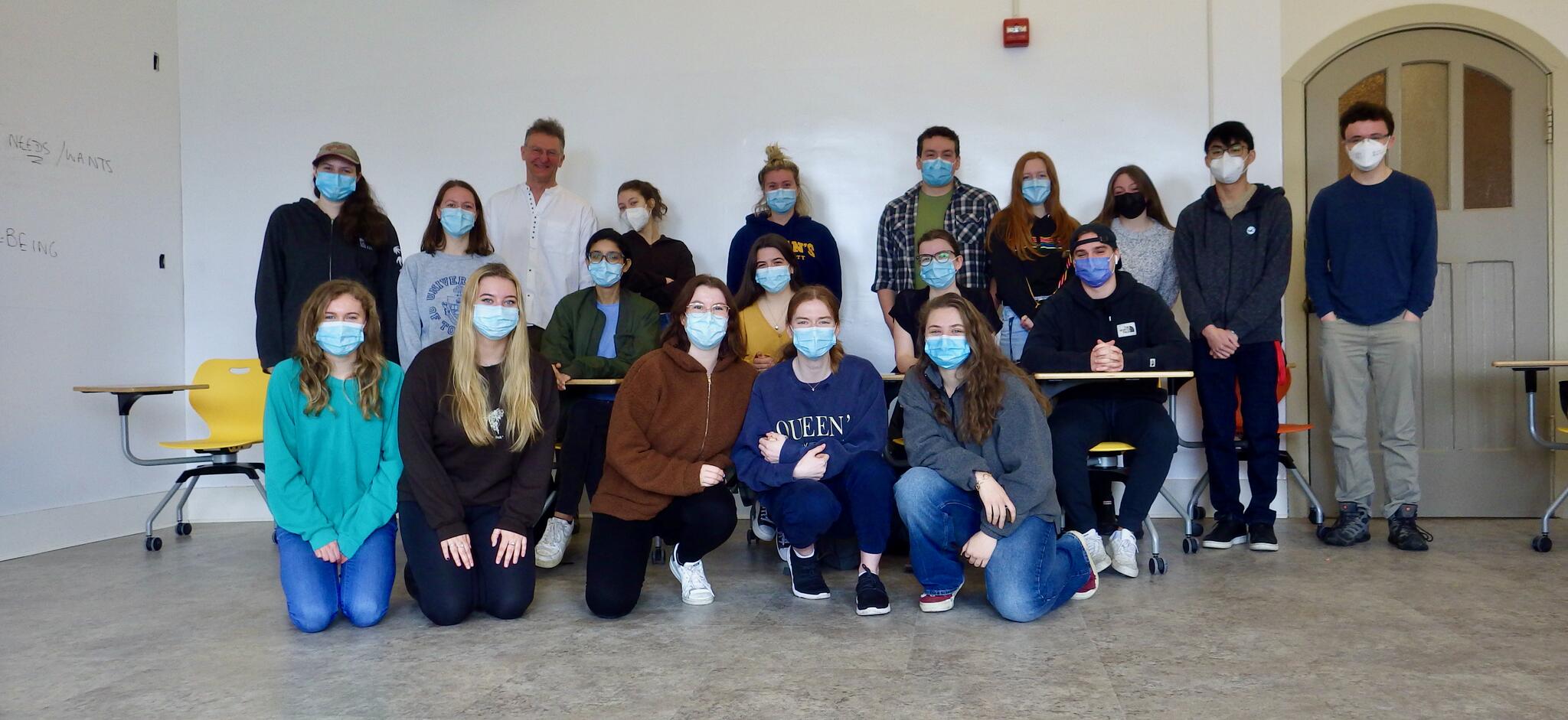
Middle row (seated): Hareena Sidhu, Abigail Long, Dominique Charland, Keaton Lightfoot;
Front row: Laura Yantha, Meghan Adair, Sydney Nicholls, Mackenzie Sauce, and Denver Gray.
Katie Maunder, Hannah Moran-Macdonald, and Elena Karakas were absent on the day of the photo, but also participated in this course.
To see materials from previous iterations of this course, use the drop-down menu under the 'Teaching' tab at the top of this page
Last update: 27 April 2022
Field trip and lab plant growth study photos







